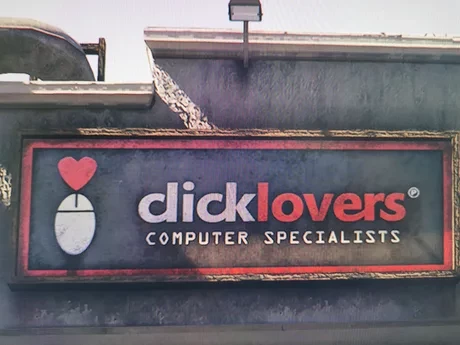Posts
4631Following
317Followers
482OpenPGP: 3AB05486C7752FE1
Jarkko Sakkinen
jarkkoJarkko Sakkinen
jarkkoGreat my little zmodem2 crate is now supporting no_std. Not that useful yet before I have made file transfer API sequential (repeated calls, one per subpacket), or even fully async compatible (or postpone async to 0.2).
https://github.com/jarkkojs/zmodem2/commit/bc83180cacf04b5611c4068062408ef0ed75f797
Jarkko Sakkinen
jarkkoalso need to make unescaping a separate stage to get clean (and fast) async implementation. now that escaping/unescaping is data instead of code it factors down the complexity of the original problem to half.
Jarkko Sakkinen
jarkkosometimes the most #fortran solution is the best :-) not pretty, probably not too “rustacean” but gets the job done…
https://github.com/jarkkojs/zmodem2/commit/a4ad4508a99b66f46ab9daf0f08956c532285107
now it is pretty easy also add quirks later on without having to maintain a grazy ruleset.
Mark A. Rayner
markarayner@mas.toTypography: it matters!
#KerningToo #humor #humour #typography #graphicdesign #writing #writingcommunity
Gustavo A. R. Silva 
gustavoars@fosstodon.org
November 2023 - My Linux Kernel work
"-Wstringop-overflow
Late in October I sent a patch to globally enable the -Wstringop-overflow compiler option, which finally landed in linux-next on November 28th. It’s expected to be merged into mainline during the next merge window, likely in the last couple of weeks of December, but “We’ll see”. I plan to send a pull request for this to Linus when the time is right. 🙂 [...]"
You can read the whole post here:
https://embeddedor.com/blog/2023/12/05/november-2023-linux-kernel-work/
Jarkko Sakkinen
jarkkoJarkko Sakkinen
jarkkoJarkko Sakkinen
jarkkoLearned how async works in Rust and it looks like straight-forward to convert #zmodem2 crate to that as I have state machine alike structure for both send and return. Given how slow these transfers I make it async only, not async opt-in feature.
After that only some minor things need to be added and fixed and I can finally start gluing it to https://github.com/jarkkojs/tior and start working on its UI again.
For tior I’ll switch also switch to serial2 crate, which provides simpler API, a pro-active maintainer and fully working Windows serial support, which is not the case with seriaport.
With the asynchronous ZMODEM crate (right now the standard is invoking external program) it is possible to implement file transfer dialog, which shows progress, cancels the transfer according to the specification and generally not get a feeling that system is somehow halted :-)
Jarkko Sakkinen
jarkkoJarkko Sakkinen
jarkkoJames Bottomley posted new version of the #HMAC encryption patches for #TPM2: https://lore.kernel.org/linux-integrity/20231127190854.13310-1-James.Bottomley@HansenPartnership.com/T/#t
I spent some time refactoring the tpm_buf changes because they were the major glitch for me in the earlier versions, and those patches have been included now to this series, which is of course great. The series is probably rather sooner than later ready for inclusion to the mainline.
This adds up to the TPM2 sealed hard drive encryption by mitigating bus interposers by a factor. An interposer is an actor intercepting traffic between the CPU and a discrete TPM chip (i.e. not firmware TPM).
A bus interposer can reset a TPM and replay PCR’s as the chip returns to its initial state, which resets them. To mitigate this, kernel creates HMAC session for each TPM transaction and derives session key from the so.called null hierarchy, which essentially provides a new random seed per TPM reset.
Therefore, interposer’s ability to reset TPM decreases because kernel will not be able to communicate with the TPM and that way indirectly a malicious act can be detected by far better chances than ever before.
IMHO, this fits quite nicely to the stuff that #OpenSUSE and #Ubuntu have been working on lately.
Jarkko Sakkinen
jarkko@occhiolist TBH, I had to do a web search to find out what systemd-homed even is :-) So I guess I don’t possess that information.
My guess is that systemd-homed should not need to support at least when having LVM on top. User space is unaware that there even is encryption for the most part (except tools that specifically communicate with firmware/UEFI/MOK for e.g. grabbing a recovery key). For me it is pretty hard to make a corner case but I don’t have hard data. on this one. Hope this helps.
Jarkko Sakkinen
jarkkoI switched to #helix editor because three advantages weight me more than disadvantage of having to learn away for #vim shortcuts:
- Too much legacy.
- Too many plugins.
- It is a varying challenge to install the latest version #neovim, which anyway needs to be done in order not to break
init.lua(and that big pile of plugins).
So for the price of few weeks inconvenience I can stop spending time on text editor configuration and/or figuring out on how to install it.
I used #vim and later on neovim fo the period 1998-2023, even before using Linux. I switched to vim in MS-DOS from text editor called #QEDIT :-)


